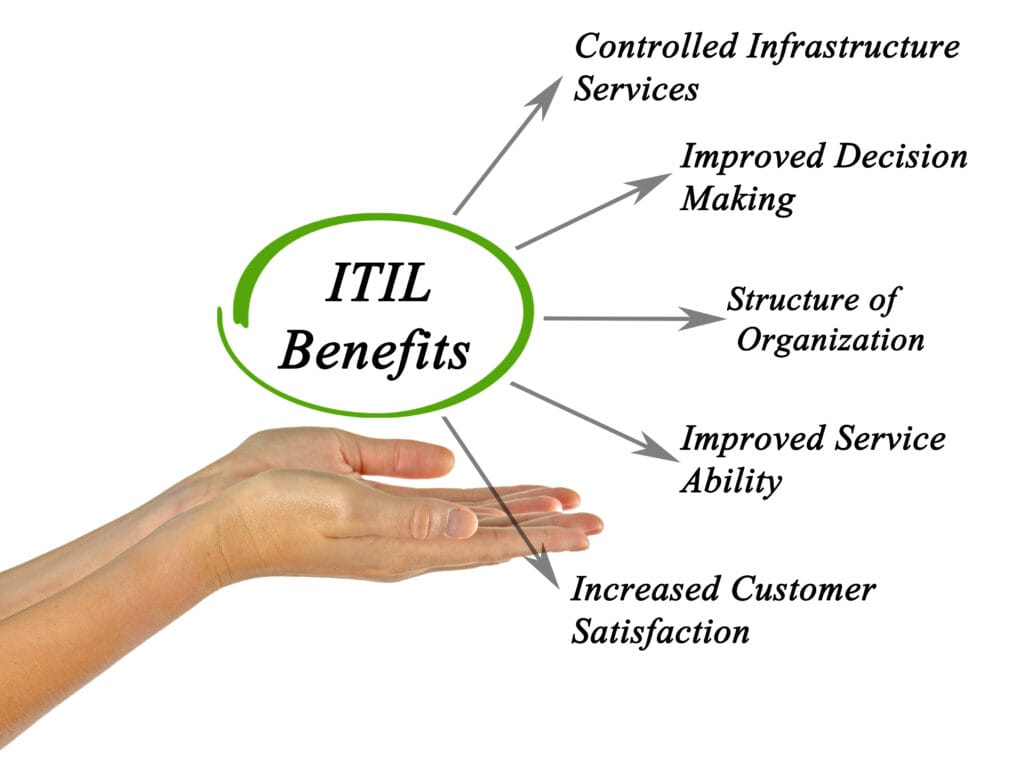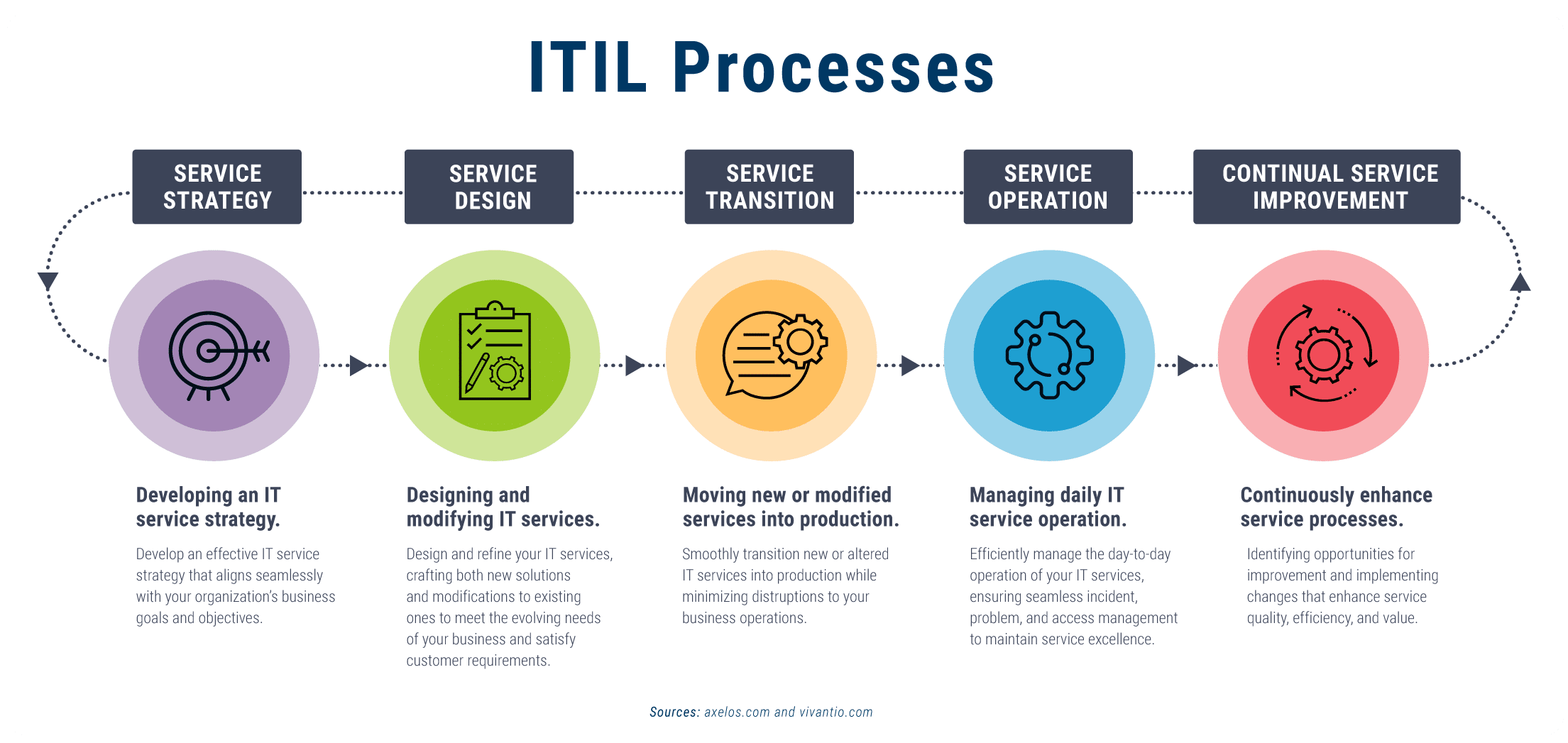
Transforming Your SME with ITIL Implementation
In today’s fast-paced digital landscape, Small and Medium-sized Enterprises (SMEs) are constantly seeking ways to enhance their IT operations. One approach gaining traction is the implementation of the Information Technology Infrastructure Library (ITIL). Designed to optimise IT service management (ITSM), ITIL offers a structured framework that can drive efficiency, improve customer satisfaction, and ultimately lead to significant cost savings. This blog post will guide you through understanding, implementing, and benefiting from ITIL in an SME context.
Understanding ITIL for SMEs
What is ITIL?
ITIL, or the Information Technology Infrastructure Library, is a set of best practices for IT service management. Originating in the UK in the 1980s, ITIL has evolved into the de facto standard for managing IT services. It provides a systematic approach to manage IT services efficiently, ensuring that they meet business needs and deliver value to customers.
For SMEs, adopting ITIL can seem daunting. However, it’s entirely feasible to adapt its principles to fit smaller, less complex environments. The core idea is to apply ITIL’s best practices in a way that aligns with your organisation’s specific needs and constraints.
Adapting ITIL Principles for SMEs
Adapting ITIL for an SME doesn’t mean implementing every principle rigidly. Instead, it involves selecting and tailoring practices that address your organisation’s unique challenges. Focus on scalable solutions that can grow with your business. Start small, perhaps by improving incident management or change management processes, and gradually expand your ITIL implementation as your organisation matures.
Benefits of Implementing ITIL in SMEs

Enhanced Efficiency and Productivity
One of the standout benefits of ITIL is the improvement in efficiency and productivity. By standardising processes, your IT team can reduce redundancy and streamline operations. This leads to quicker resolution times for IT issues, freeing up resources to focus on strategic initiatives that drive business growth.
Improved Service Quality and Customer Satisfaction
With ITIL, service delivery becomes more reliable and predictable. Standardised processes ensure that IT services are consistently delivered at a high quality, which in turn enhances customer satisfaction. Happy customers are more likely to remain loyal and recommend your services, fostering long-term business success.
Cost Savings Through Better Resource Utilisation
Effective resource management is crucial for SMEs operating on tight budgets. ITIL helps businesses utilise their resources more efficiently, avoiding unnecessary expenditures. Better asset management and capacity planning mean you can do more with less, maximising the return on your IT investments.
Steps to Implement ITIL in an SME Setting
Assessment Phase
Evaluating Current IT Processes
The first step in implementing ITIL is to assess your current IT processes. Identify strengths and weaknesses, and understand where improvements are needed. Conduct a thorough audit to get a clear picture of how your IT services are currently managed.
Identifying Areas for Improvement
Once you have a comprehensive overview, pinpoint specific areas that would benefit most from standardisation and optimisation. This could be anything from improving incident response times to enhancing change management procedures.
Planning Phase
Developing a Roadmap
Create a detailed roadmap for ITIL implementation. This should outline the steps you need to take, the resources required, and the timeline for each phase. Tailor the roadmap to your SME’s specific needs, ensuring it’s realistic and achievable.
Tailored to SME Needs
Remember, your roadmap should be flexible enough to adapt to changes in your business environment. Keep it aligned with your business goals and make sure it addresses the unique challenges faced by your organisation.
Implementation Phase
Rolling Out Changes
Begin rolling out changes in line with your ITIL roadmap. Start with high-impact areas that will provide quick wins and build momentum. Ensure all stakeholders are on board and understand their roles in the implementation process.
In Line with ITIL Framework
Adhering to the ITIL framework means consistently applying best practices across your IT operations. This might involve standardising your incident management process or improving your service desk functions. Whatever the focus, ensure changes are documented and communicated to all relevant parties.
Monitoring and Continuous Improvement
Establishing Metrics
To measure the success of your ITIL implementation, establish clear metrics. These could include key performance indicators (KPIs) such as incident resolution times, customer satisfaction scores, and cost savings. Regularly review these metrics to gauge progress.
Making Adjustments
ITIL is not a one-time project but an ongoing effort. Use the data from your metrics to identify areas for further improvement. Adjust your processes as necessary to ensure they continue to meet the evolving needs of your business.
Overcoming Challenges in Implementing ITIL for SMEs
Common Obstacles
Implementing ITIL in an SME is not without its challenges. Common obstacles include resistance to change, limited resources, and a lack of expertise. However, these can be overcome with careful planning and a phased approach.
Addressing Resistance to Change
Change can be difficult, especially in smaller organisations where employees wear multiple hats. To address resistance, communicate the benefits of ITIL clearly and involve staff in the implementation process. Providing training and support can also help ease the transition.
Maximising Limited Resources
SMEs often operate with limited resources. To maximise what you have, prioritise high-impact areas and consider leveraging external expertise where necessary. Tools and software designed for ITIL implementation can also provide valuable support.
Tools and Resources for ITIL Implementation
Software Solutions
Several software solutions can help streamline ITIL implementation. Tools like ServiceNow, Atlassian Jira Service Management, and BMC Helix ITSM offer comprehensive features tailored to ITIL best practices, making it easier to manage your IT services effectively.
Training and Certification
Investing in ITIL training and certification for your team can provide the knowledge and skills needed for successful implementation. Look for accredited training providers that offer courses suited to your organisation’s needs.
Online Communities and Forums
Engaging with online communities and forums can provide additional support and insights. Platforms like Reddit, LinkedIn groups, and specialised ITIL forums offer a wealth of information and the opportunity to connect with other professionals who have gone through similar journeys.
Conclusion
Implementing ITIL in an SME can be a game-changer. By enhancing efficiency, improving service quality, and achieving cost savings, ITIL provides a robust framework for managing IT services effectively. While challenges exist, they can be overcome with careful planning, stakeholder engagement, and the right tools and resources.
If you’re ready to take the next step in optimising your IT operations, consider exploring ITIL further. Start small, stay committed, and watch as your SME transforms into a more efficient and customer-focused organisation.
For more information and personalised guidance on ITIL implementation, don’t hesitate to reach out to our team of experts. Your IT transformation journey begins today!
